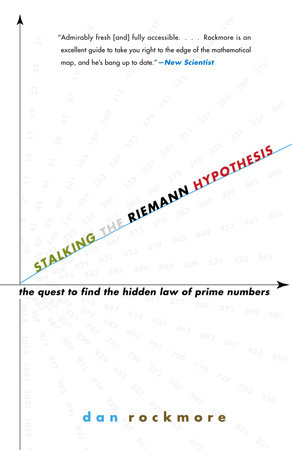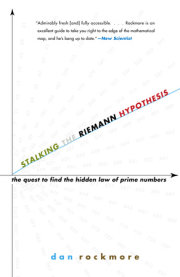Prologue—It All Begins with Zero
It’s one of those slate-gray summer days that more properly belong to mid-August than late May, one of those days in New York City when it is barely clear where the city ends and the sky begins. The hard-edged lines and Euclidean-inspired shapes that are building, sidewalk, and pavement all seem to fuse into one huge melted mass that slowly dissolves into the humid, breezeless, torpid air. On mornings like this, even this irrepressible metropolis seems to have slowed a notch, a muffled cacophony more bass than treble, as the city that never sleeps stumbles and shuffles to work.
But here in Greenwich Village, at the corner of Mercer and West Fourth streets, where we find New York University’s Warren Weaver Hall, the hazy torpor is interrupted by a localized high-energy eddy. Here, deep in the heart of the artistic rain forest that is “the Village,” just across the street from the rock ’n’ rolling nightclub the Bottom line, a stone’s throw from the lofts and galleries that gave birth to
Jackson Pollock, Andy Warhol, and the Velvet Underground, is the home of the Courant Institute of Mathematical Sciences, where at this moment there is an excitement worthy of any gallery opening
in SoHo, or any new wave, next wave, or crest-of-the-wave musical performance.
The lobby and adjacent plaza are teeming with mathematicians, a polyglot and international group, abuzz with excitement. Listen closely, and amid the multilingual, every-accent mathematical jibber-jabber you’ll hear a lot of talk about nothing, or more properly a lot of talk about zero.
Zero is not an uncommon topic of conversation in New York, but more often than not it’s the “placeholder zeros” that are on the tip of the New Yorker’s tongue. These are the zeros that stand in for the orders of magnitude by which we measure the intellectual, cultural, and financial abundance that is New York: one zero to mark the tens of ethnic neighborhoods, two for the hundreds of entertainment options, three for the thousands of restaurants, six for the millions of people, and, of course, the zeros upon zeros that mark the billions or even trillions of dollars that churn through the city every day. These are not the zeros of void, but the zeros of plenty.
But, today, just one week past Memorial Day 2002, it’s a zero of a different flavor which has attracted this eclectic group to downtown New York City. Here some of the world’s greatest mathematicians are meeting to discuss and possibly, just possibly, witness the resolution of the most important unsolved problem in mathematics, a problem that holds the key to understanding the basic mathematical elements that are the prime numbers. The zeros that tip the tongues of these mathematical adventurers are zeta zeros,* and the air is electric with the feeling that perhaps this will be the day when we lay to rest the mystery of these zeros, which constitutes the Riemann hypothesis.
For over a century mathematicians have been trying to prove the Riemann hypothesis: that is, to settle once and for all a gently asserted conjecture of Bernhard Riemann (1826–1866), who was a professor of mathematics at the University of Göttingen in Germany. Riemann is perhaps best known as the mathematician responsible for inventing the geometrical ideas upon which Einstein built his theory of general relativity. But in 1859, for one brief moment, Riemann turned his attention to a study of the long-familiar prime numbers. These are numbers like two, three, five, and seven, each divisible only by one and itself, fundamental numerical elements characterized by their irreducibility. Riemann took up the age-old problem of trying to find a rule which would explain the way in which prime numbers are distributed among the whole numbers, indivisible stars scattered without end throughout a boundless numerical universe.
In a terse eight-page “memoir” delivered upon the occasion of his induction into the prestigious Berlin Academy, Riemann would revolutionize the way in which future mathematicians would henceforth study the primes. He did this by connecting a law of the primes to the understanding of a seemingly completely unrelated complex collection of numbers—numbers characterized by their common behavior under a sequence of mathematical transformations that add up to the Riemann zeta function. Like a Rube Goldbergesque piece of mathematical machinery, Riemann’s zeta function takes in a number as raw material and subjects it to a complicated sequence of mathematical operations that results in the production of a new number. The relation of input to output for Riemann’s zeta function is one of the most studied processes in all of mathematics. This attention is largely due to Riemann’s surprising and mysterious discovery that the numbers which seem to hold the key to understanding the primes are precisely the somethings which Riemann’s zeta function turns into nothing, those inputs into Riemann’s number cruncher that cause the production of the number zero. These are the zeta zeros, or more precisely the zeros of Riemann’s zeta function, and they are the zeros that have attracted a stellar cast of mathematicians to New York.
In his memoir, Riemann had included, almost as an aside, that it seemed “highly likely” that the zeta zeros have a particularly beautiful and simple geometric description. This offhand remark, born of genius and supported by experiment, is the Riemann hypothesis. It exchanges the confused jumble of the primes for the clarity of geometry, by proposing that a graphical description of the accumulation of the primes has a beautiful and surprisingly simple and precise shape. The resolution of Riemann’s hypothesis holds a final key to our understanding of the primes.
We’ll never know if Riemann had in mind a proof for this assertion. Soon after his brief moment of public glory, the ravages of tuberculosis began to take their toll on his health, leaving him too weak to work with the intensity necessary to tie up the loose ends of his Berlin memoir. Just eight years later, at the all too young age of thirty-nine, Riemann was dead, cheated of the opportunity to settle his conjecture.
Since then, this puzzling piece of Riemann’s legacy has stumped the greatest mathematical minds, but in recent years frustration has begun to give way to excitement, for the pursuit of the Riemann hypothesis has begun to reveal astounding connections among nuclear physics, chaos, and number theory. This unforeseen confluence of mathematics and physics, as well as certainty and uncertainty, is creating a frenzy of activity that suggests that after almost 150 years, the hunt might be over.
This is the source of the buzz filling the Courant Institute’s entryway. It is a buzz amplified by the fact that whoever settles the question of the zeta zeros can expect to acquire several new zeros of his or her own, in the form of a reward offered by the Clay Institute of Mathematics, which has included the Riemann hypothesis as one of seven “Millennium Prize Problems,” each worth $1 million. So the jungle of abstractions that is mathematics is now full of hungry hunters. They are out stalking big game—the resolution of the Riemann hypothesis—and it seems to be in their sights.
The Riemann hypothesis stands in relation to modern mathematics as New York City stands to the modern world, a crossroads and nexus for many leading figures and concepts, rich in unexpected and serendipitous conjunctions. The story of the quest to settle the Riemann hypothesis is one of scientific exploration and discovery. It is peopled with starry-eyed dreamers and moody aesthetes, gregarious cheerleaders and solitary hermits, cool calculators and wild-eyed visionaries. It crisscrosses the Western world and includes Nobel laureates and Fields medalists. It has similarities with other great scientific journeys but also has its own singular hallmarks, peculiar to the fascinating world of mathematics, a subject that has intrigued mankind since the beginning of thought.
2The God-Given Natural Numbers
The great German mathematician Leopold Kronecker (1823–1891) said that “God created the natural numbers.” And it is true that the natural numbers—one, two, three, four; on and on they go—appear to have been present from the beginning, coming into existence with the birth of the universe, part and parcel of the original material from which was knit the ever-expanding continuum of space-time.
The natural numbers are implicit in the journey of life, which is a nesting of cycles imposed upon cycles, wheels within wheels. One is the instant. Two is the breathing in and out of our lungs, or the beat of our hearts. The moon waxes and wanes; the tides ebb and flow. Day follows night, which in turn is followed once again by day. The cycle of sunrise, noon, and sunset give us three. Four describes the circle of seasons.
These natural numbers help us to make sense of the world by finding order, in this case an order of temporal patterns, that lets us know what to expect and when. We notice the rising and setting of the sun, and that cycle of two is given a more detailed structure as we follow the sun through the sky over the course of a day. We turn the temporal telescope around and also see day as part of the larger cycle of the phases of the moon, whose steady progress is situated within the cycle of the seasons that makes up the year. Patterns within patterns within patterns; numbers within numbers within numbers—all working together to create a celestial symphony of time.
Armed with this new understanding we make tentative, tiny forays out into the Jamesian “booming, buzzing world” and shape a life within and around it. Embedded in the recognition of the cycle is the ability to predict, and thus to prepare, and then to direct the world to our advantage. We coax and bend an unflinching, steady march of time; and in a subtle jujitsu of nature, technologies are born. We learn when to sow and when to reap, when to hunt and when to huddle. We exploit that which we cannot change. We discover the cycle and ride it as an eagle rides an updraft.
In the absence of a natural cycle we may impose one, for in routine we find a sense of control over the unwieldy mess that is life. We relish the comfort of being a regular at a local diner or a familiar face at the coffee cart on the street, and the rhythm of the daily morning dog walk. We dream of options, if only to choose our own routines, our own patterns, our own numbers.
But as befits that which is part and parcel of space-time, number is not only a synecdoche of temporal organization but also the most basic and elementary means of quantifying a spatial organization of the world. Nature gives us few, if any, truly straight lines or perfect circles. But there is one moon; there is one sun; the animals go two by two. We organize, we count, and therefore we are.
In this way, number is presented to us in the world in both time and space, instances upon instances, but this is only the beginning. Kronecker said not only that the natural numbers are God-given, but also that “all else is the work of man.” What first appear as singular phenomena are eventually unified, gathered into a collective that is then recognized as a pattern. Soon, the pattern is itself familiar, and so it becomes less a pattern and more a particular. The game is then repeated, and we find a new superpattern to explain what had once seemed disparate patterns. So on and so on we go, building the discipline that will come to be known as mathematics.
Beginning “the work”
Suppose that I walk past a restaurant and catch a glimpse of a perfectly set square table, place settings at each edge, each side of the table providing a resting place for a full complement of plates, glasses, and silverware. As I approach the entrance to the restaurant, a group of women arrive and I imagine them seated at that beautiful table, one at each side, continuing their animated conversation. As I pass by again some time later, I see the women leave the restaurant. They stand outside, say their good-byes, and one by one are whisked away by taxicabs.
What is it that the group of women has in common with the collection of place settings, the chairs at the table, the very sides of the table, and the taxicabs that finally take them away? It is the correspondence that they engender. It is a correspondence that I make mentally and visually as I watch the women, one that you make as you read this story, seeing each woman paired with a chair, a plate, or a taxi. Any other grouping of objects that could be paired with them
in this way has this same property, this same basic pattern. This pattern is one of “numerosity.” These groups all share the property of “fourness.”
Each collection, whether it be the chairs, the place settings, or the taxis, is such that its component objects can be put into a one-to-one correspondence with the group of women. We say, as an abbreviation for this property, that the group of women has a size of four, and this is a property shared among each of the sets of objects that may be put into a correspondence with the women. If you had in your possession a collection of hats and I inquired if you had one for each of the women, you might have me list the women, or show you a picture of the group, but even better, you could ask me “how many” women need hats. My answer, “four,” would be enough for you to check to see if you had one hat for each.
The self-contained nature of the correspondence—there is no object left unpaired—is perhaps what underlies the other classification of the number four, or for that matter any natural number, as an integer, and in particular a positive integer. The totality of the integers consists of the natural numbers, their negatives, and zero.
Thus four becomes an agreed-upon name for a pattern that we recognize in the world. At Christmas, four are the calling birds; at Passover, four are the matriarchs, symbols that are simultaneously iconic and generic. We wind our way back through numerical history. Four are the fingers proudly displayed by a protonumerate toddler, a set of scratchings on a Sumerian cuneiform, or the bunch of beads or pebbles lying at the feet of a Greek philosopher. The last of these universal physical numerical proxies, which the Greeks called calculi, gave birth to our words calculus and calculate, and mark the mathematician as both the forefather and the child of the first “bean counters”: the Pythagoreans.
Copyright © 2005 by Dan Rockmore. All rights reserved. No part of this excerpt may be reproduced or reprinted without permission in writing from the publisher.






